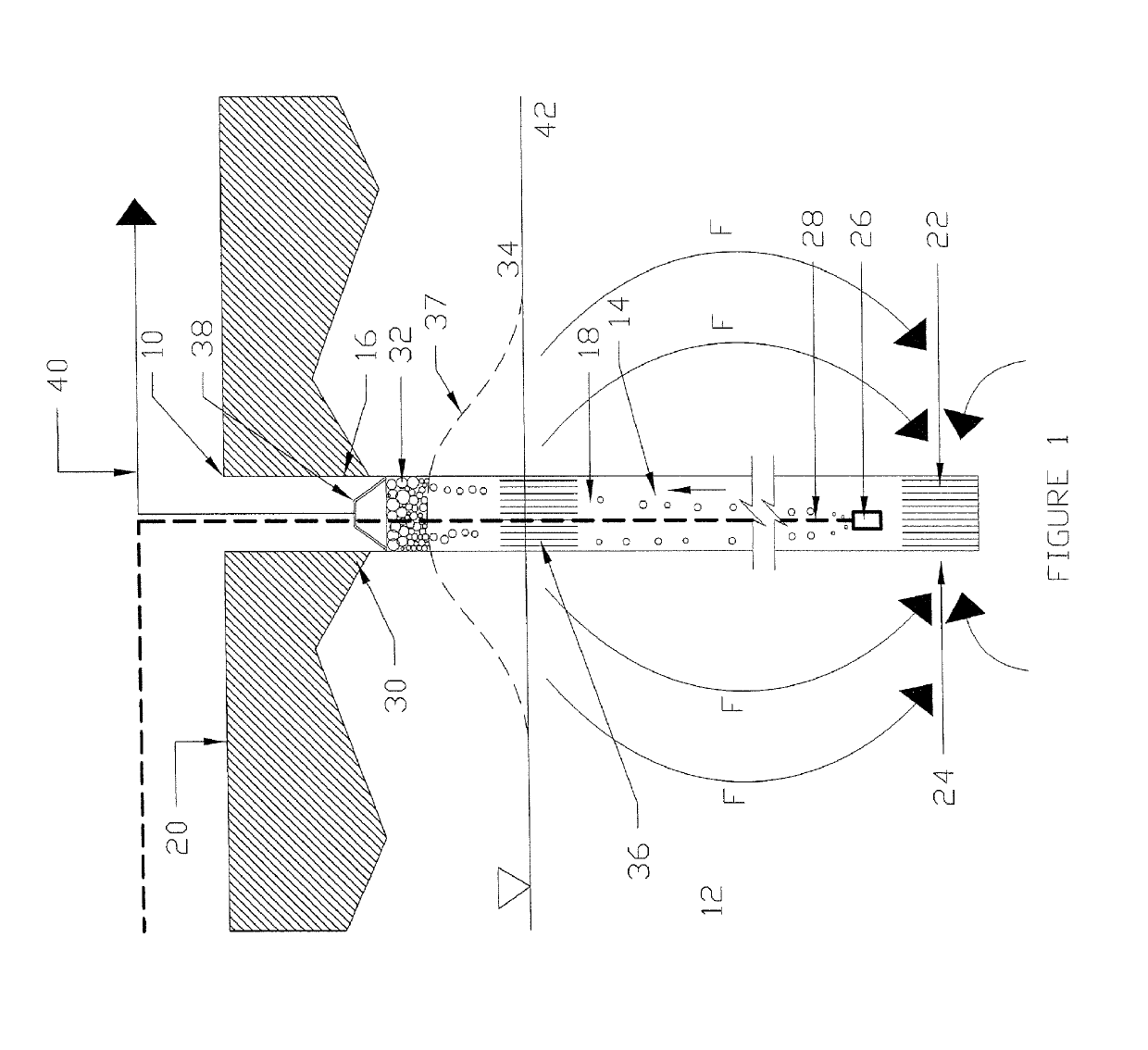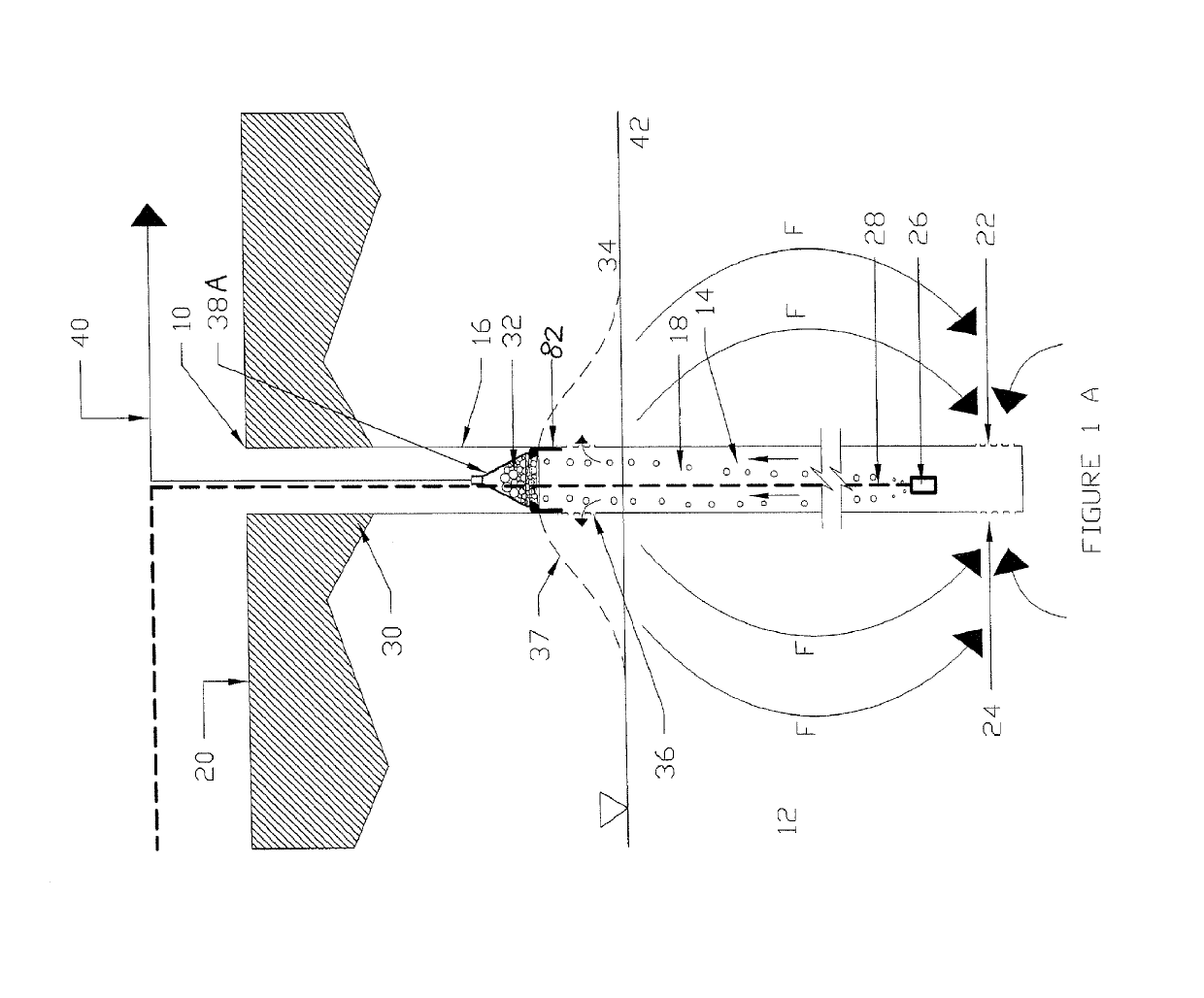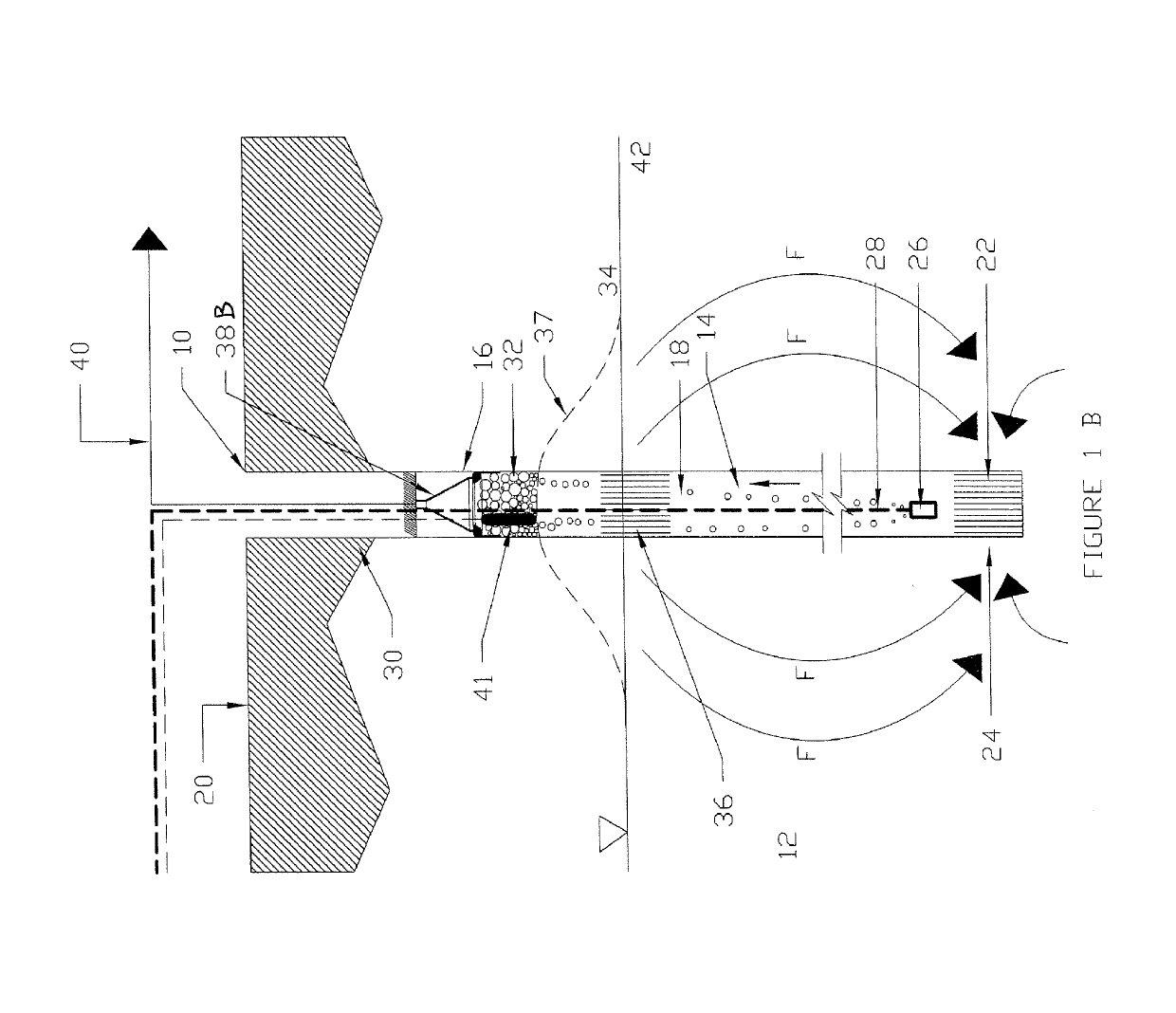Method And Apparatus For Separation Of A Substance From Groundwater
a technology of groundwater and apparatus, applied in the direction of water/sewage treatment by ion exchange, transportation and packaging, borehole/well accessories, etc., can solve the problems of contaminated soils, groundwater and drinking water supplies, and techniques that do not work to treat groundwater with pfas contamination, etc., to achieve the effect of adequate drainage characteristics and easy chang
- Summary
- Abstract
- Description
- Claims
- Application Information
AI Technical Summary
Benefits of technology
Problems solved by technology
Method used
Image
Examples
Embodiment Construction
[0080]This disclosure relates to the features of a groundwater well 10 and its use for removal of an organic contaminant from the surrounding ground 12, for instance in an unconfined or a semi-confined aquifer. Referring to the embodiment disclosed in in FIG. 1, the well body 14 is in the form of an elongate, cylindrical column 16 having an interior chamber 18. The well body 14 is circular in cross-section and is positioned within the ground 12, below the ground surface level 20. The well body 14 can be a tube or column casing 16 which is made of hard plastic or metal sufficient to withstand the hydraulic pressure at depths into the ground, and sufficiently structurally sound so that it will not collapse or corrode. In one example, the column 16 has an internal bore of 150 millimetres and reaches an overall depth below the ground surface level 20 of 5 metres, although these dimensions are exemplary only, and depend on the particular site being treated.
[0081]The chamber 18 has a scre...
PUM
| Property | Measurement | Unit |
|---|---|---|
| depth | aaaaa | aaaaa |
| depth | aaaaa | aaaaa |
| concentration | aaaaa | aaaaa |
Abstract
Description
Claims
Application Information
 Login to View More
Login to View More - R&D
- Intellectual Property
- Life Sciences
- Materials
- Tech Scout
- Unparalleled Data Quality
- Higher Quality Content
- 60% Fewer Hallucinations
Browse by: Latest US Patents, China's latest patents, Technical Efficacy Thesaurus, Application Domain, Technology Topic, Popular Technical Reports.
© 2025 PatSnap. All rights reserved.Legal|Privacy policy|Modern Slavery Act Transparency Statement|Sitemap|About US| Contact US: help@patsnap.com



